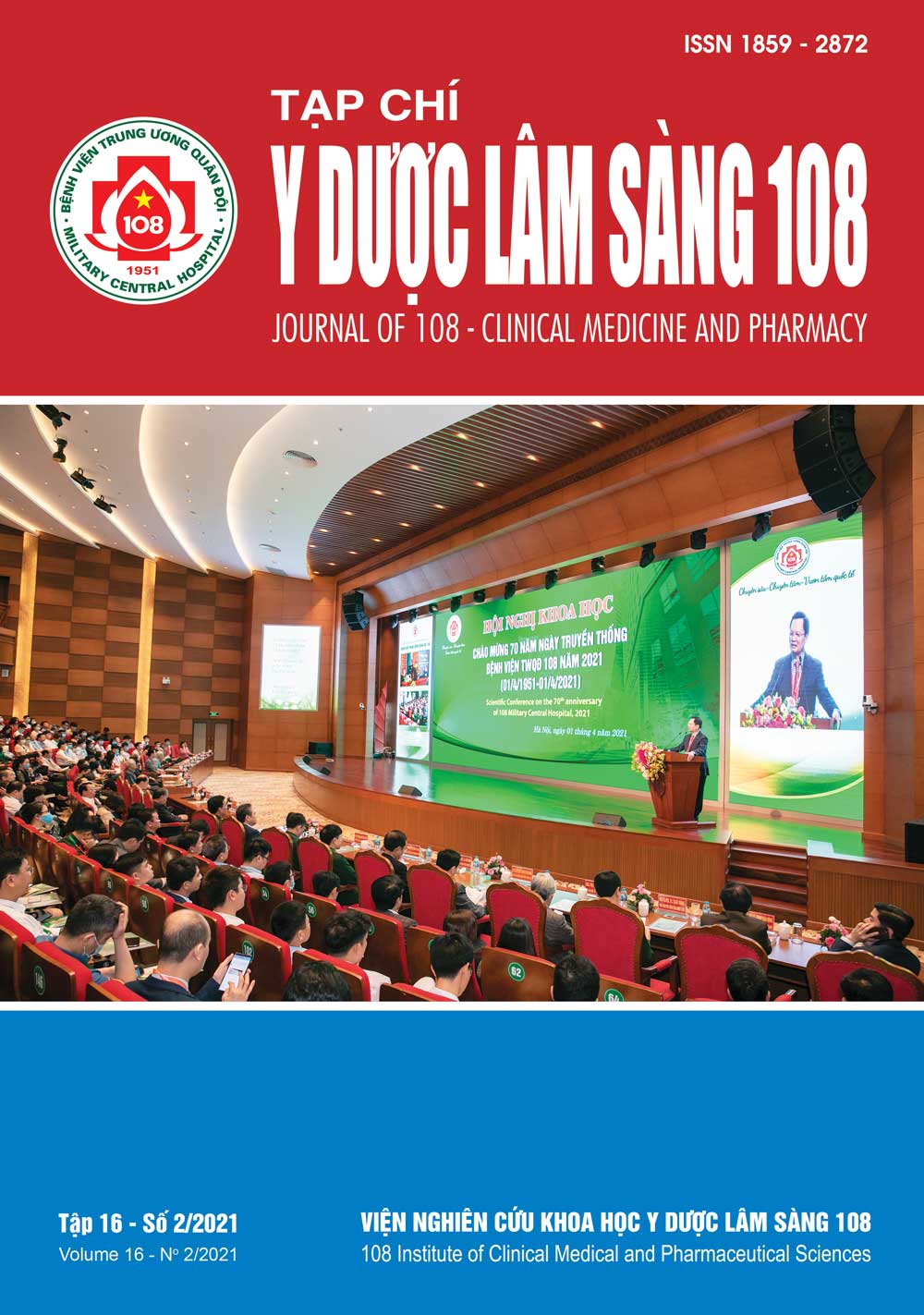Optic nerve sheath meningiomas: A report of 12 surgically treated cases
Main Article Content
Keywords
Abstract
Objective: To evaluate the surgical results of optic nerve sheath meningiomas. Subject and method: A prospective and descriptive study, 12 patients optic nerve sheath meningiomas who underwent surgery at the Neurosurgery department of ChoRay Hospital from 01/01/2017 to 30/09/2019. We descriptived clinical and MRI features of all patients. The post-operative results were evaluated by neuroophthalmological improvability, total tumoral resection and complications at the 3 month post-op. Result: Mean age of the 5 male (41.7%) and 7 female (58.3%) patient was 40.6 ± 14.7 years (ranging 13 - 61 years). The most common presenting symptoms were exophthalmos and decreased visual acuity (100%), optic disc atrophy (50%), and pain (16.7%). In 3 (25%) cases, the tumors invasive intracranial. The mean diameter of orbital tumors was 33.6 ± 9.6mm (18 - 45mm). The diagnosis was based on pathology and the tumors were all grade I meningiomas. Transcranial orbitotomy approach was used in all cases. Total resection was achieved in 7 patients (58.3%) while subtotal resection was 41.7%. No one died in this study. There was not intraorbital or intracranial hematoma or infection. The mean follow up period was 24.5 months (range from 9 months to 39 months), ten patients (83.3%) experienced loss of vision. Conclusion: Surgical treatment is often associated with loss of vision in the affected eye. Surgical intervention is recommended in patients with no useful vision, significant proptosis and for preventing contralateral eye spread.
Article Details
References
2. Boulos PT, Dumont AS (2001) Meningiomas of the orbit contemporary considerations. Neurosurgical focus 10(5): 1-10.
3. Huang X, Tang D, Wu T, Jian T, Sun F (2018) Ectopic orbital meningioma: A retrospective case series. BMC ophthalmology 18(1): 296.
4. Jian T, Sun F, Tang D, Wang S, Wu T, Zhao L (2015) Clinical analysis of transcranial orbitotomy approach on cranio-orbital tumors. Journal of craniofacial surgery 26(2): 441-446.
5. Kondo A, Akiyama O, Suzuki M, Arai H (2019) A novel surgical approach for intraorbital optic nerve tumors. Journal of clinical neuroscience 59: 362-366.
6. Parker RT, Ovens CA, Fraser CL, Samarawickrama C (2018) Optic nerve sheath meningiomas: Prevalence, impact, and management strategies. Eye and brain 10: 85.
7. Parlin A, Dumitrescu A, Nunery WT, Timoney PJ, Sokol JA (2017) Retrospective chart review of the use of imaging and biopsy in the diagnosis of optic nerve sheath meningiomas and intra-conal orbital lymphomas at a single institution. Orbit 36(6): 392-396.
8. Yu HJ, Wu YT, Chen HK, Lin JW (2011) Primary orbital meningioma: A study of six cases at a single institution. Apmis 119(1): 36-43.
 ISSN: 1859 - 2872
ISSN: 1859 - 2872
